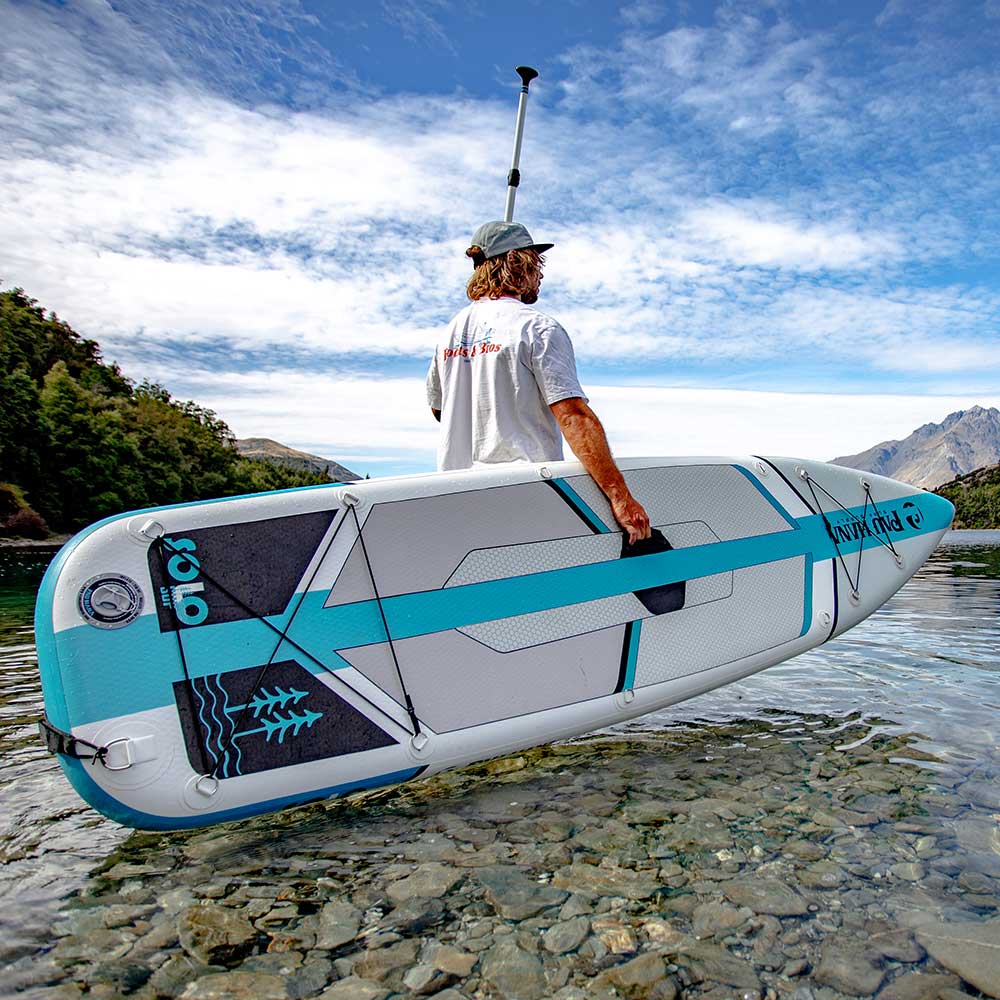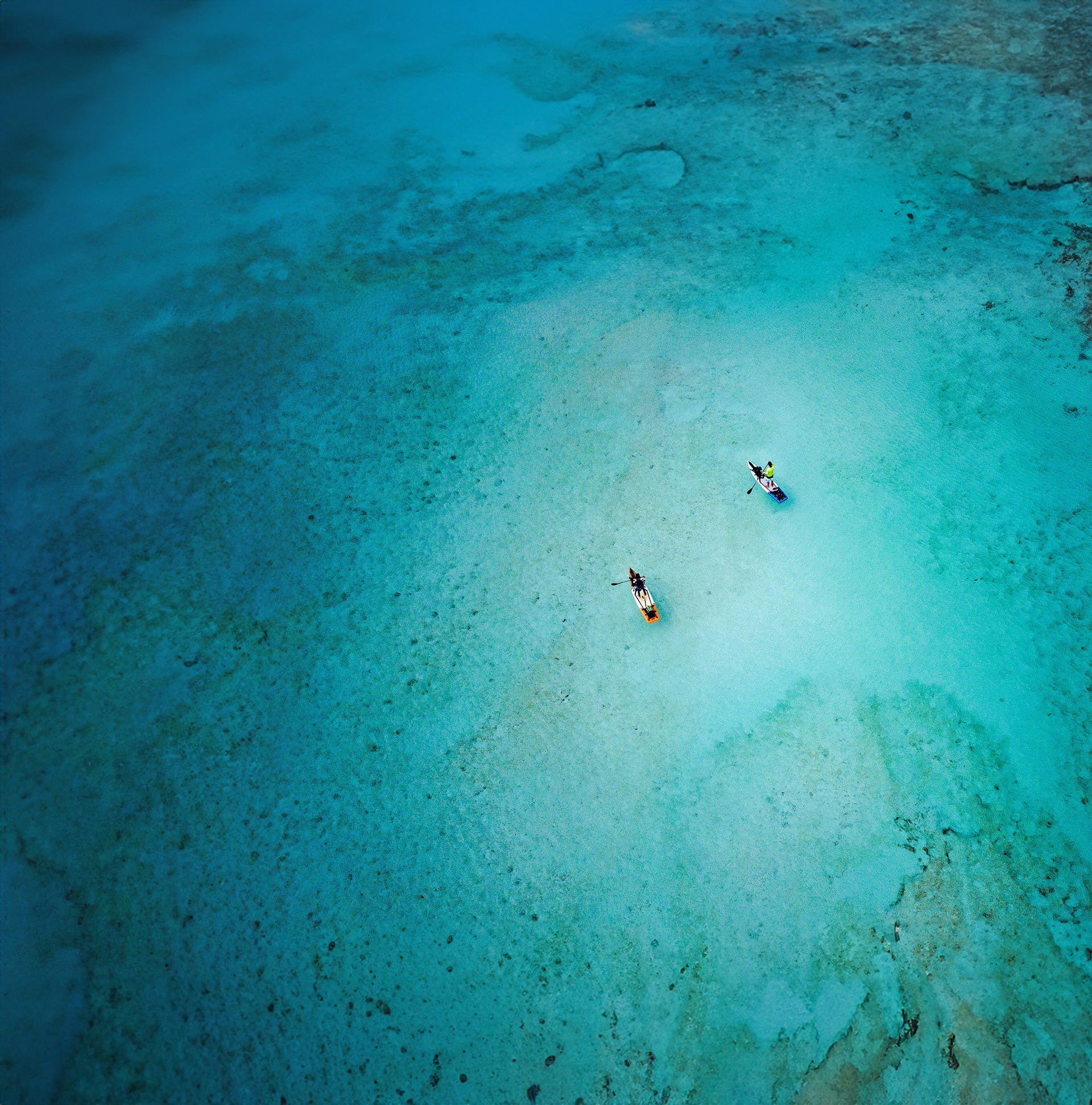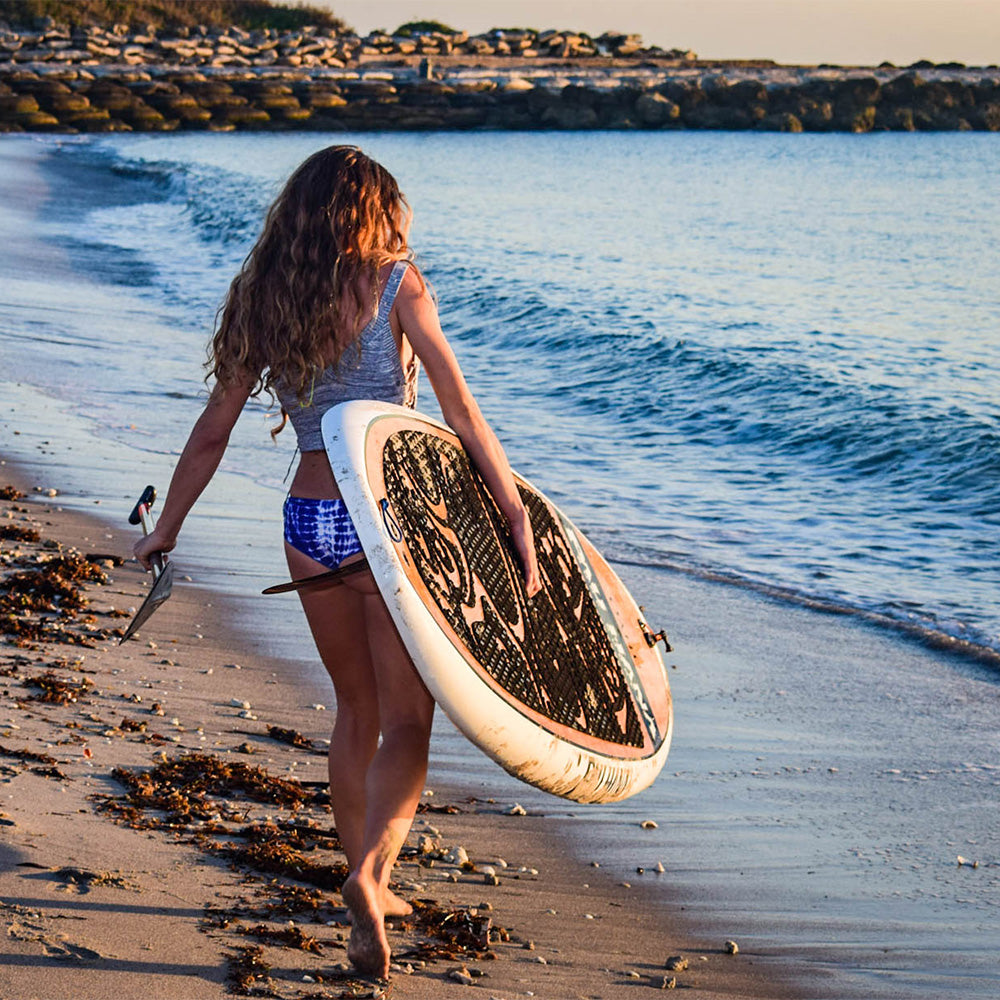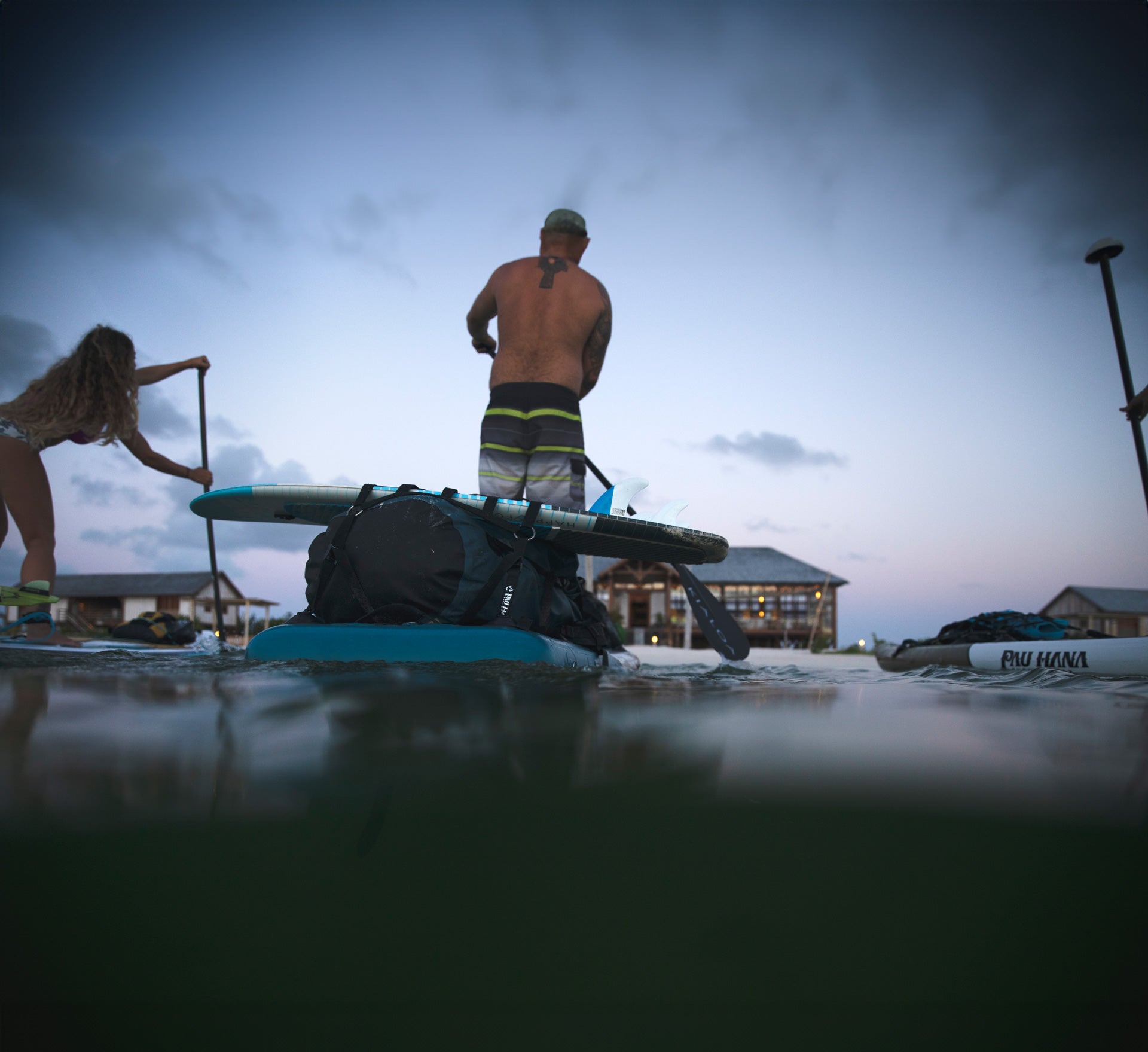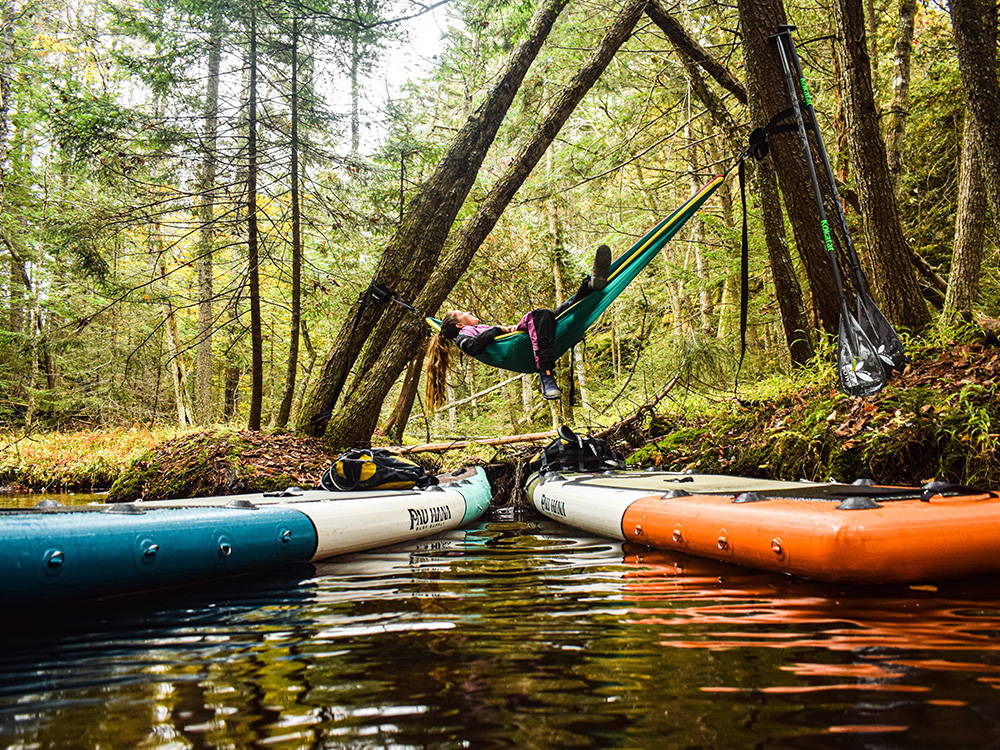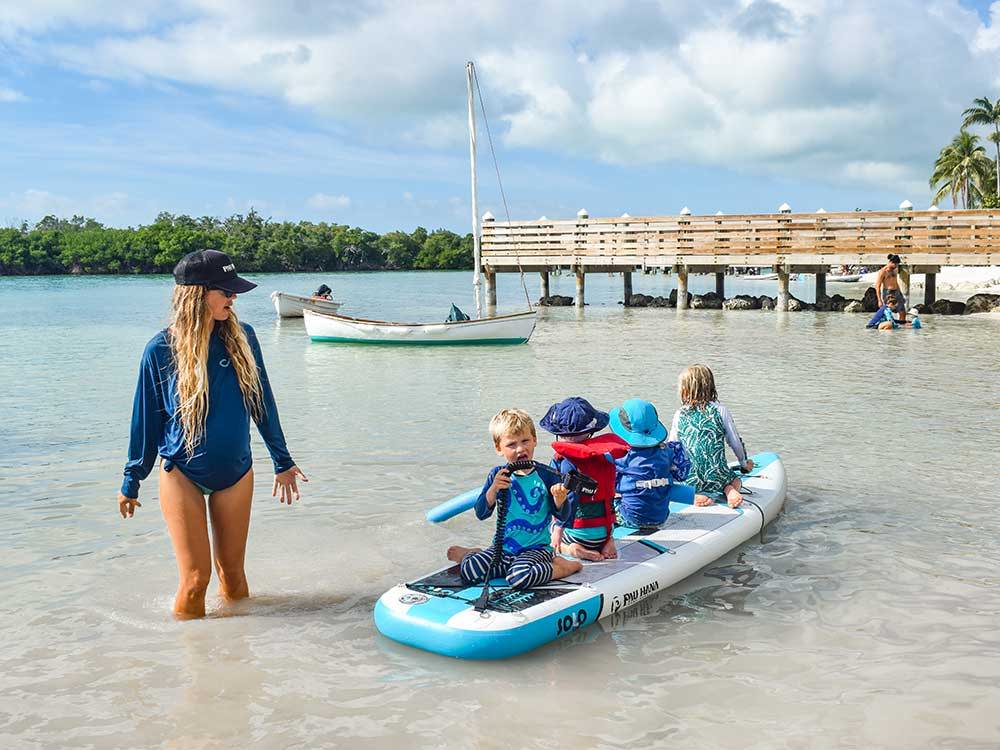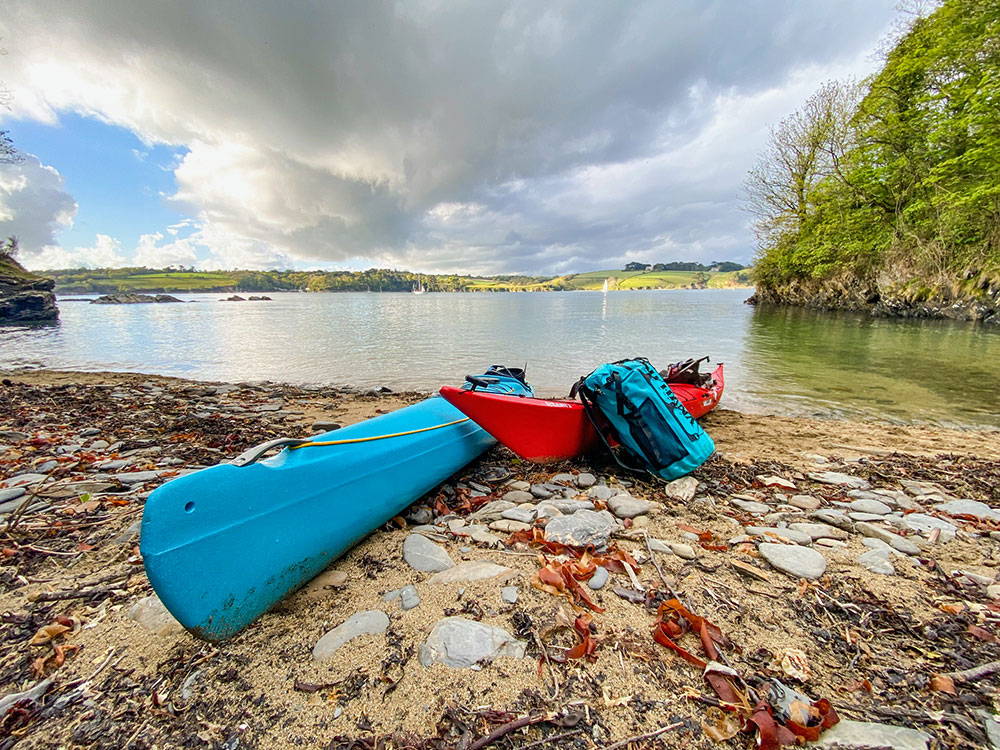our list of essential items for any overnight paddleboard trip
There's nothing that connects you to nature quite like camping. And what better way to avoid the crowds than by escaping the beaten path on your paddleboard! Carrying your overnight gear on your SUP may seem daunting, but with the right gear and proper packing techniques, it can be a liberating and fun activity to do. Paddleboarding allows you to find your very own, remote shoreline, uninhabited by tourists and away from the constraints of a campground.
Here is our list of overnight paddling must-haves, it's the base for any camping trip, and the list can be extended and adapted for different times of the year, types of trips (multi-day/overnighter), and locations:

Sleeping Bag & Drybag Stuffsack
There are so many sleeping bags on the market to choose from today including down and synthetic options. Down sleeping bags have a great warmth to weight ratio, while synthetic bags are more water-resistant and continue to insulate when they are wet. The choice between down and synthetic is personal preference and you'll want to weigh up the pros and cons of each with your individual needs before buying one. For an overnighter, make sure the temperature rating of your sleeping bag goes as low as the temperatures you expect. It is recommended that you pack your sleeping into a drybag stuff sack, and then into a dry bag - This way if you have a drybag malfunction your sleeping bag should remain dry, which is a high priority when camping out.
Sleeping Pad
Sleeping pads provide a couple of different uses, the first being comfort when making the floor your bed for the night, the other is insulation. If you are camping in a colder environment you'll want to make sure you have a sleeping pad that offers good insulation from the ground. There are a few different types of sleeping pads to choose from, foam pads like the Thermarest Z lite and inflatable pads such as the Thermarest NeoAir. Opt for a lightweight, packable option that won't take up too much room when packed into a drybag.
Tarp & Bivy
A tarp is a handy piece of gear to have on a multiday trip. They can be rigged up in many different ways to offer all sorts of shelters, and they are lighter and more compact than a tent to carry. Your SUP paddles can be utilized as poles and using paracord tied off to rocks or trees acts as guy lines. A bivy is a weatherproof sack that goes over your sleeping pad and bag, protecting you from the elements and your pad from punctures. Teaming a tarp with a bivy sack can save weight and packs down a lot smaller than your average one-man tent. We love the tarp and bivy set up and sleeping under the stars.

Camp Shoes
Paddling barefoot or not, you'll want to pack some footwear to put on when you get to camp. There are many different options, and it's worth weighing up what will be best for your campsite before you leave to avoid overpacking or being underprepared. In warmer climates and simple terrain, a simple pair of flip-flops might be the best choice. Anywhere else and you may want to consider something more substantial such as Croc's - a lightweight, comfortable option that can be made warmer by wearing socks. Another option, if you paddle in shoes, is to invest in some dry socks such as Sealskinz, then when you get to camp you can simply take your shoes off, put the dry socks on then the wet shoes back over the top.
Sunscreen, Bug Repellent & Bear Spray
Always pack sunscreen, even if the sun isn't in the forecast. Water intensifies the sun and UV rays can penetrate clouds, so it's a good idea to keep a layer of sunscreen on when you are out paddleboarding or hanging at camp. Wearing sunscreen and keeping hydrated are recipes for success on any paddling trip, especially overnighters. Pick a brand that is reef-friendly without the nasty chemicals that could harm the ecosystem of the water.
Packing a bug repellent can be the difference between an enjoyable trip and a hellish trip. You can find both of these in travel-sized bottles and we recommend having these two items close to hand when camping by the water.
Bear spray may be required depending on the location of your adventure. Do some research before you leave to check if you are entering bear territory and pack appropriately.

Jetboil, Fuel & Dehydrated Meals (+ Spork)
There are many different types of camping cookers on the market but for a paddleboard overnighter, we highly recommend a Jetboil. A jetboil heat water super fast, within seconds you'll have boiling hot water you can use for tea, coffee, and dehydrated meal packs. Although the Jetboil is limiting to dehydrated meal packs, this way of camp cooking is by far the most compact and weight-saving. Using dehydrated meal packs means you won't have to carry plates or bowls but you will need a small gas bottle and a spork!

Water Purification
Water filters are super handy for these types of adventures as it saves you lugging liters of freshwater around with you, and being a paddleboarder, you'll never be too far from a water source! A Lifestraw and empty Nalgene work as a good pair to scoop up water and drink straight away. While a device like a Sawyer Squeeze works better to filter big volumes of water for cooking etc. It's important to note that water filters do not purify the water, they simply filter it. Invest in some purification tablets if your water source could be contaminated by development or agriculture.
First Aid Kit & Repair Kit
A well-thought-through first aid kit is essential for any trip especially when you might be far from help. Key considerations when choosing or building your first aid kit are the size of the group taking part, trip length, the environment you will be in on your trip and the risks that could impose, and any special needs such as prescription meds. Along with a good first aid kit, you should have the knowledge of basic first aid, if you don't, take a course and do some reading.
A repair kit is another worthy investment that could be really useful should your board hit rocks or your sleeping pad puncture. Once you have all your gear ready for your trip, think through the items that could need repairing and carry any spare parts, glue, or patches just in case.

Communication Device
You may choose a trip where you'll be in signal the entire time, where your phone loaded with credit, topo maps and GPS will be adequate. In that case, all you'll need to figure out is how to keep it charged for the entire duration of the trip. There are many solar-powered or portable charging packs on the market these days that are lightweight and compact for camping. However, if your adventure takes you off the grid you will need to consider using a different type of communication devices like a Spot or InReach. These are GPS devices that run off satellite and can send out a message should you run into unexpected trouble. A repair kit is another worthy investment that could be really useful should your board hit rocks or your sleeping pad puncture. Once you have all your gear ready for your trip, think through the items that could need repairing and carry any spare parts, glue, or patches just in case.
Headtorch
Unless you are close to or in the arctic circle in the summer months, you'll need a head torch! Head torches are a lot more convenient than a regular torch, especially if you need to do any paddling in the dark, as they are worn around your head and leave your hands free for doing everything else. A headtorch with batteries is preferred if you don't have a solar or portable charger pack.

Toilet Paper & Shovel
Your toilet technique will vary depending on where you choose to adventure; in popular, high-use areas, then you'll have to pack out what you pack in. Take some Restop bags with you and dedicate a separate dry bag for your waste. If you camp in the backcountry, you'll need to pack a shovel for burying your poop. Dig a hole 8" deep and 4" wide and cover over what you 'produce'. Only bury natural toilet paper.
Firestarter
A lighter is a good choice to take camping, store it in a waterproof bag so as not to get the flint wet. It's a good idea to stash some waterproof matches and some cotton wool with your first aid kit as a backup in case you lose the lighter or it breaks. It'll save you rubbing sticks together.

Eco-Friendly Soap
There are many brands of environmentally friendly soaps on the market these days, we especially like Dr.Bronners as it's an all-in-one, do-it-all soap that can clean you, your pots, clothes, and everything in between.
As a bonus, it is made with organic oils and fair trade ingredients so you can feel good every time you take a wash!
There are many other items you will want to pack specific to your camping trip, but with these base products in your toolbox, you'll be able to have a successful overnight trip.


